I realize that there are only three different octatonic scales before they start repeating.
I usually think of them from a half / whole perspective as opposed to whole / half although either perspective works.
I also know that composers throughout history have used them to create tension in their music and John Williams uses them a lot in his action cues. For example, I was transcribing “T-Rex Rescue & Finale” from Jurassic Park and found that at any given moment in the cue, his is pulling his bass lines, chords, ostinatos, stabs etc. from the same octatonic scale. At some point, he’ll modulate to a new octatonic scale but the underlying bass lines, chords, ostinatos, stabs etc. all then correspond to the new octatonic scale.
As you may know, Sonokinetic just released their latest phrase based library “Espressivo”. It appears that most of the phases in this library are built from octatonic scales. The way the interface is laid out, you can layer any woodwind, brass, percussion or string phrase with any other phrase. This allows a woodwind phrase from the C octatonic scale to be played simultaneously with a brass phrase from the C# octatonic scale and a string phrase from the D octatonic scale.
As you can see, one approach is to layer bass lines, chords, ostinatos, stabs etc. from the same octatonic scale. The other approach is to layer bass lines, chords, ostinatos, stabs etc. from different octatonic scales. My ear tells me that the second method is even more dissonant since the vertical notes are more chromatic. What method do use / have experience with?
Any feedback would be greatly appreciated, thanks.
I usually think of them from a half / whole perspective as opposed to whole / half although either perspective works.
I also know that composers throughout history have used them to create tension in their music and John Williams uses them a lot in his action cues. For example, I was transcribing “T-Rex Rescue & Finale” from Jurassic Park and found that at any given moment in the cue, his is pulling his bass lines, chords, ostinatos, stabs etc. from the same octatonic scale. At some point, he’ll modulate to a new octatonic scale but the underlying bass lines, chords, ostinatos, stabs etc. all then correspond to the new octatonic scale.
As you may know, Sonokinetic just released their latest phrase based library “Espressivo”. It appears that most of the phases in this library are built from octatonic scales. The way the interface is laid out, you can layer any woodwind, brass, percussion or string phrase with any other phrase. This allows a woodwind phrase from the C octatonic scale to be played simultaneously with a brass phrase from the C# octatonic scale and a string phrase from the D octatonic scale.
As you can see, one approach is to layer bass lines, chords, ostinatos, stabs etc. from the same octatonic scale. The other approach is to layer bass lines, chords, ostinatos, stabs etc. from different octatonic scales. My ear tells me that the second method is even more dissonant since the vertical notes are more chromatic. What method do use / have experience with?
Any feedback would be greatly appreciated, thanks.
Last edited:



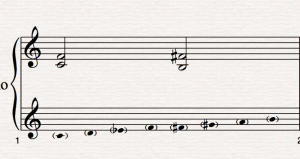
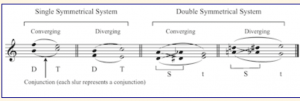


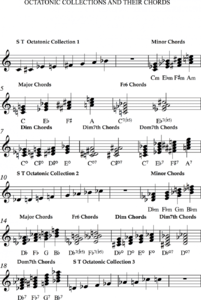
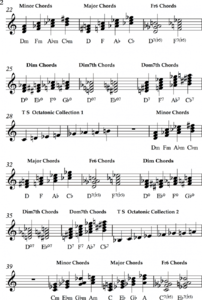

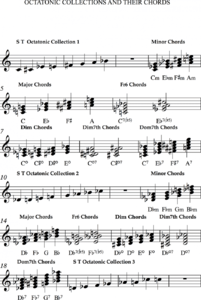

 Have a good night!
Have a good night!
